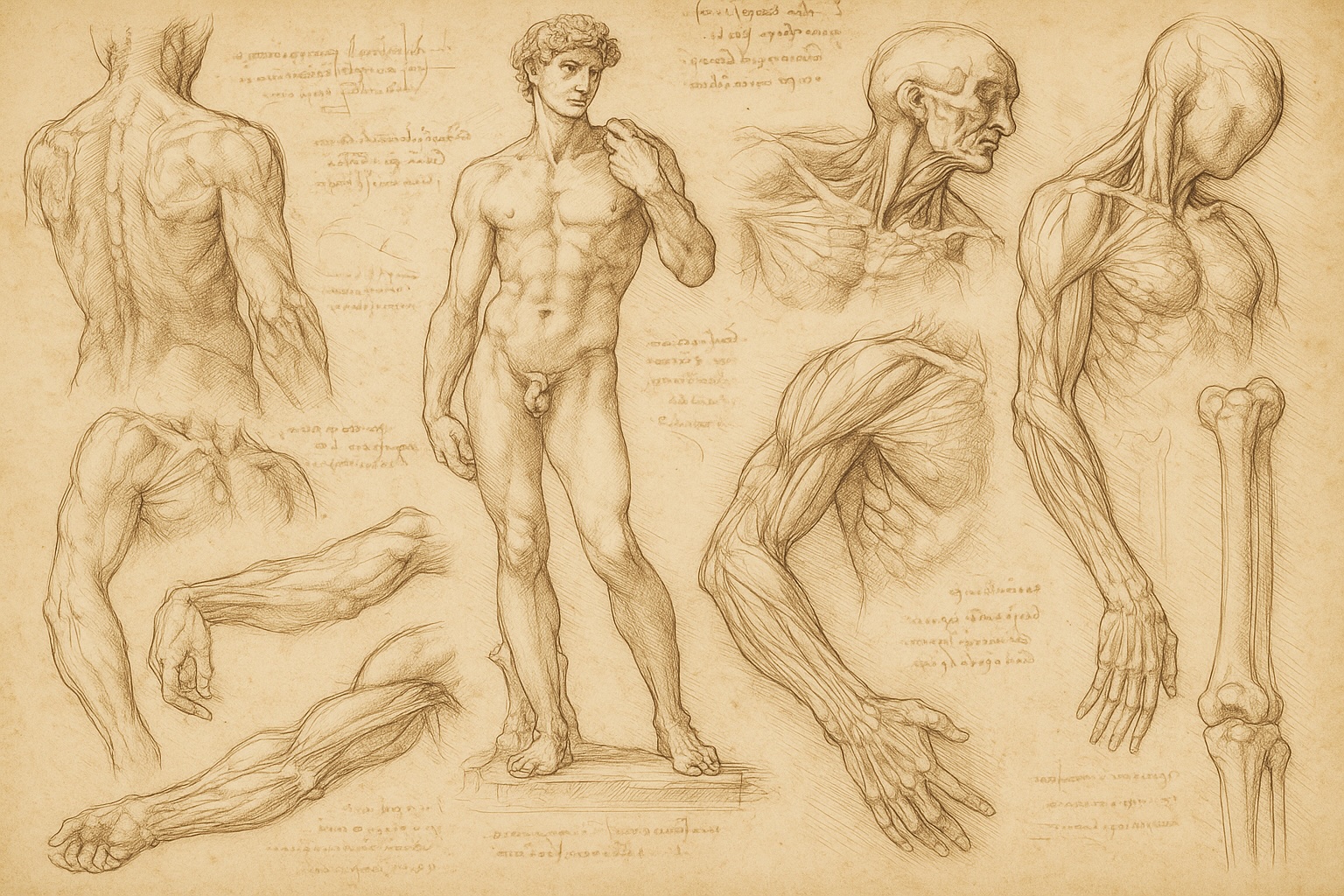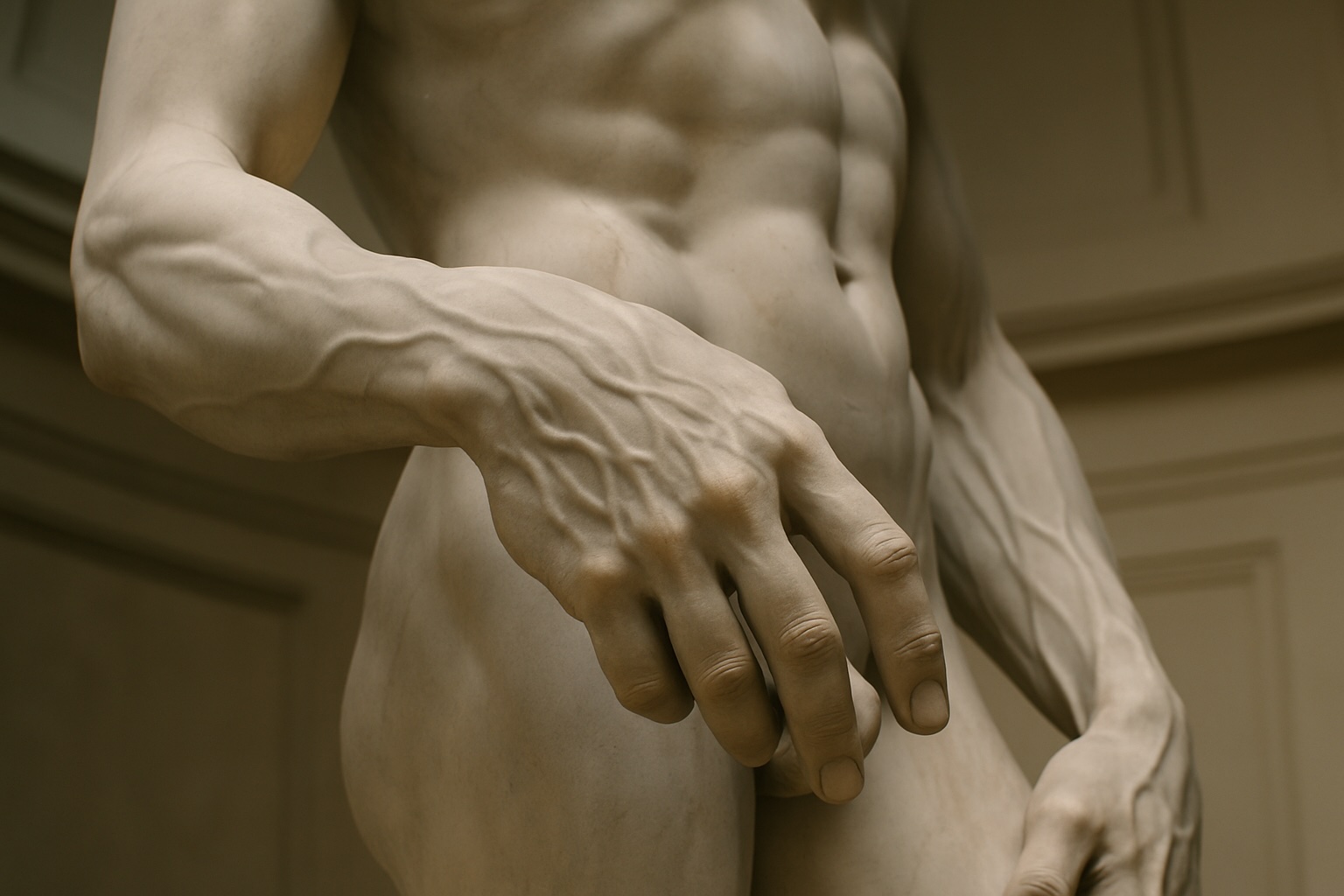Anatomical Research
Discover how deep anatomical knowledge enabled Michelangelo to create one of the most lifelike sculptures in history.
When we look at Michelangelo’s David, we don’t just see marble—we see muscle, tension, anticipation. It's as if he might blink at any moment. But how did Michelangelo achieve such a lifelike portrayal centuries before modern science? The answer lies in anatomy. This post dives deep into the meticulous biological and anatomical research behind one of the greatest sculptures ever created.
The Artist Who Studied Like a Surgeon
Long before anatomy was part of any artist's toolkit, Michelangelo was dissecting cadavers in secret. As a teenager, he began studying human corpses at the Santo Spirito hospital in Florence. This wasn't just morbid curiosity—it was scientific ambition. He wanted to understand the human body the way a physician would.
His drawings from this period show a fascination with the musculoskeletal system—the bones, muscles, and tendons that give us form and motion. Unlike Leonardo da Vinci, who also dissected but explored internal organs and physiological functions, Michelangelo was laser-focused on what lies beneath the skin, particularly how bodies moved and held tension.

Michelangelo’s anatomical sketches drawn from real human dissections during his youth.
From Sketch to Stone: Applying Anatomy to David
When Michelangelo was commissioned to sculpt David, he brought years of anatomical expertise to the marble block. His goal wasn’t to just sculpt a man, but to sculpt an ideal—a biblical hero, caught in the quiet before action.
- Contrapposto Pose: The famous S-curve of David’s body is a textbook example of contrapposto, where one leg bears the weight while the other is relaxed.
- Veins and Tendons: Look at David’s right hand. The bulging veins and tight tendons are anatomically accurate.
- Muscle Dynamics: From deltoids to quadriceps, each muscle is shown either relaxed or engaged based on function.

Muscle flexion and relaxation across David’s upper torso and limbs.
Anatomical "Errors" or Genius Decisions?
- Oversized Right Hand: Possibly symbolic of strength, or an adjustment for viewer perspective.
- Missing Muscle: The absence of the infraspinatus muscle might have been due to marble flaws or artistic choice.

Close-up of David’s oversized hand showing anatomical accuracy and symbolic strength.
Integrating Anatomy into ExploreDavid.com
ExploreDavid.com aims to visualize this anatomical excellence through interactive 3D models, comparison with modern medicine, behind-the-scenes content, and expert interviews.
- 3D Model Exploration: Rotate, zoom, and explore muscle groups with detailed overlays.
- Scientific Comparisons: Visual comparison with modern anatomical illustrations.
- Expert Commentary: Hear from historians and medical experts.
Why This Matters
David is more than a sculpture—it’s a fusion of artistic mastery and scientific study. Michelangelo’s anatomical research remains a beacon of how deeply understanding the human body can elevate art.